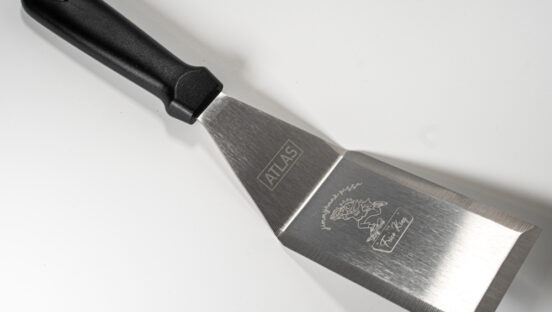Inventory management is a very underappreciated practice as far as our experience in the industry is concerned. Independent operators feel as if they do not have enough time to keep their finger on all segments of their business at all times. Sadly, most operators handle inventory on a need basis and do not forecast need in order to take advantage of volume buying or incentives.
We feel at La Nova that monitoring the cost of goods and minimizing “shrink” or spoilage is a proven staple to bottom line success.
That being said, you would probably be surprised to know that we still manage our inventory through a manual system. We have a high volume environment, so we have the luxury of being able to have a manager at each location that devotes about 50 percent of their time to inventory issues on a day-to-day basis. We buy fresh produce daily, which forces us to keep very tight in turns on those items and gets us in the coolers every day. It also allows us to gauge our par usage on a weekly basis to estimate comparable purchases week to week. We also have the luxury of leveraging our volumes to get more service out of our distribution partners. Two deliveries each week from each distributor we use protects us against a lot of failings that may occur manually.
A lot of companies out there that have multiple units utilize a POS system to manage their inventory levels. The most technologically advanced systems can break down the item inventory needs based on the ingredient decks of items that are purchased. You can micromanage the daily turns or analyze the activity based on any timeframe. We have a POS system that does this exact thing, but we do not utilize it due to the fact that we want to also monitor theft and spoilage that the system can only account for on a percentage basis.
We have spoken to several POS companies in the past or seen them at trade events and they have resources for every style of operator. If you would like to search some of the POS companies who have inventory control systems integrated into their systems, go to
https://www.pmq.com/mag/2003winter/pos_features_2003.html for a comprehensive listing.
Some of the systems are Windows-based, which allows for ease of transfer of information to other programs like Excel and Word. Other systems have proprietary reporting that can be tailored to the specific operation. You, as an operator, need to analyze the most cost effective solution that gives you enough benefits to justify the cost. We are always looking to take it to the next level in regard to management, and still suggest doing a manual inventory at least weekly to check the reporting.
As mentioned, a great link to the breakout of individual systems capabilities is on the PMQ website.
The address is:
https://www.pmq.com/mag/2003winter/pos_features_2003.html. You can’t find a better comparison resource that will give you a head start regarding what each of the companies has to offer you.
Each and every operation has a different style of ownership and management. Inventory management is a key component of success that sometimes flies under the radar a bit. Maintaining quality and safety at the store level is fundamental to the success of the operation. All you have to do is go into your cooler and find you only have dated items to sell that day to gauge the importance of control here.
Why does volume leverage work? It allows us to buy dry goods and other high use items in bigger lots to allow for volume price point advantages. We also take advantage of every trade show event or promotion activity with our vendor partners to get breaks throughout the year. These events also allow for us to get face-to-face with the decision-makers for those brands to negotiate any advantage we possibly can. As always, we push quality as an operator. Serving good pizza is a direct result of stocking quality items and using them when they are at their best shelf life.












